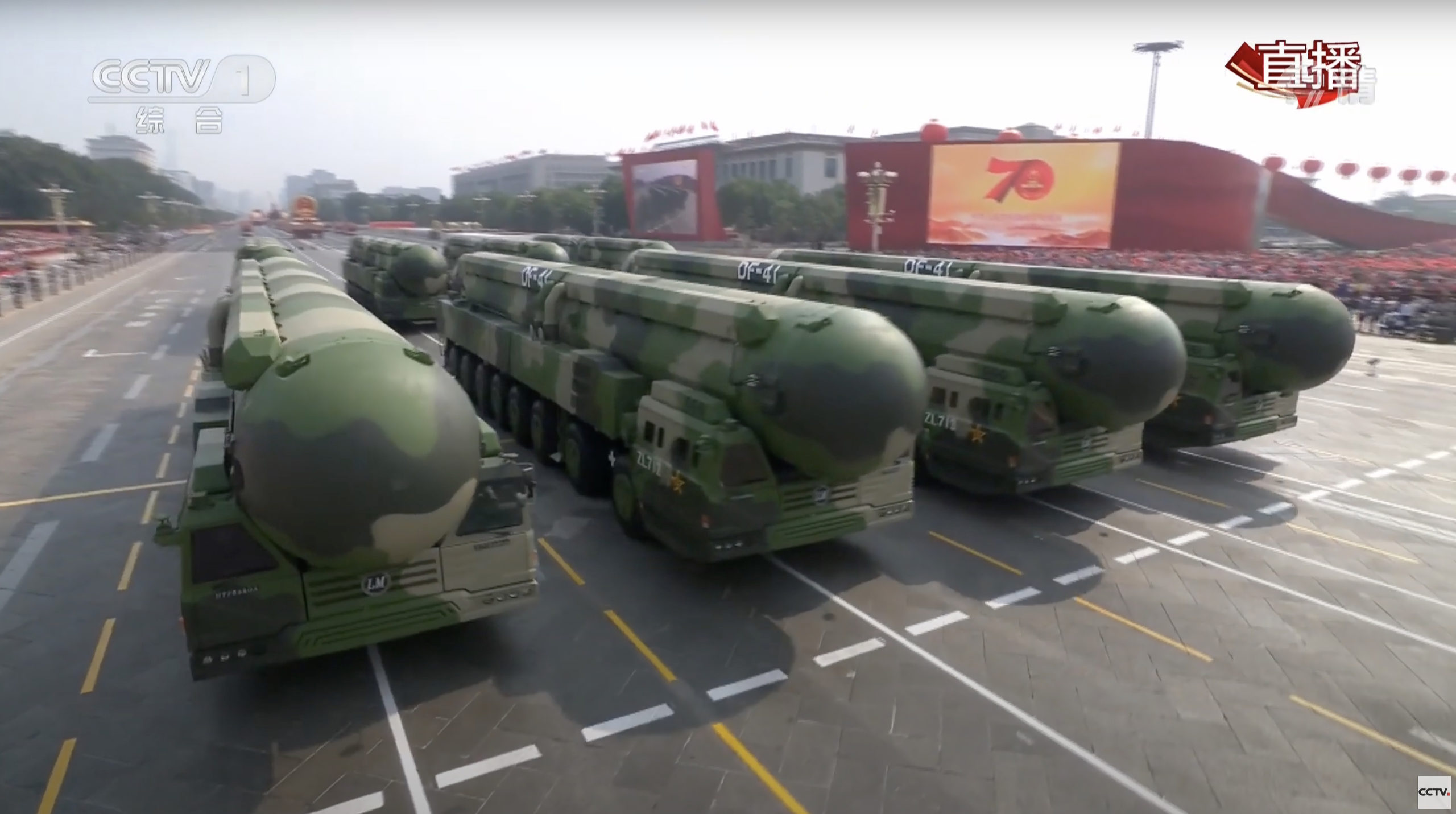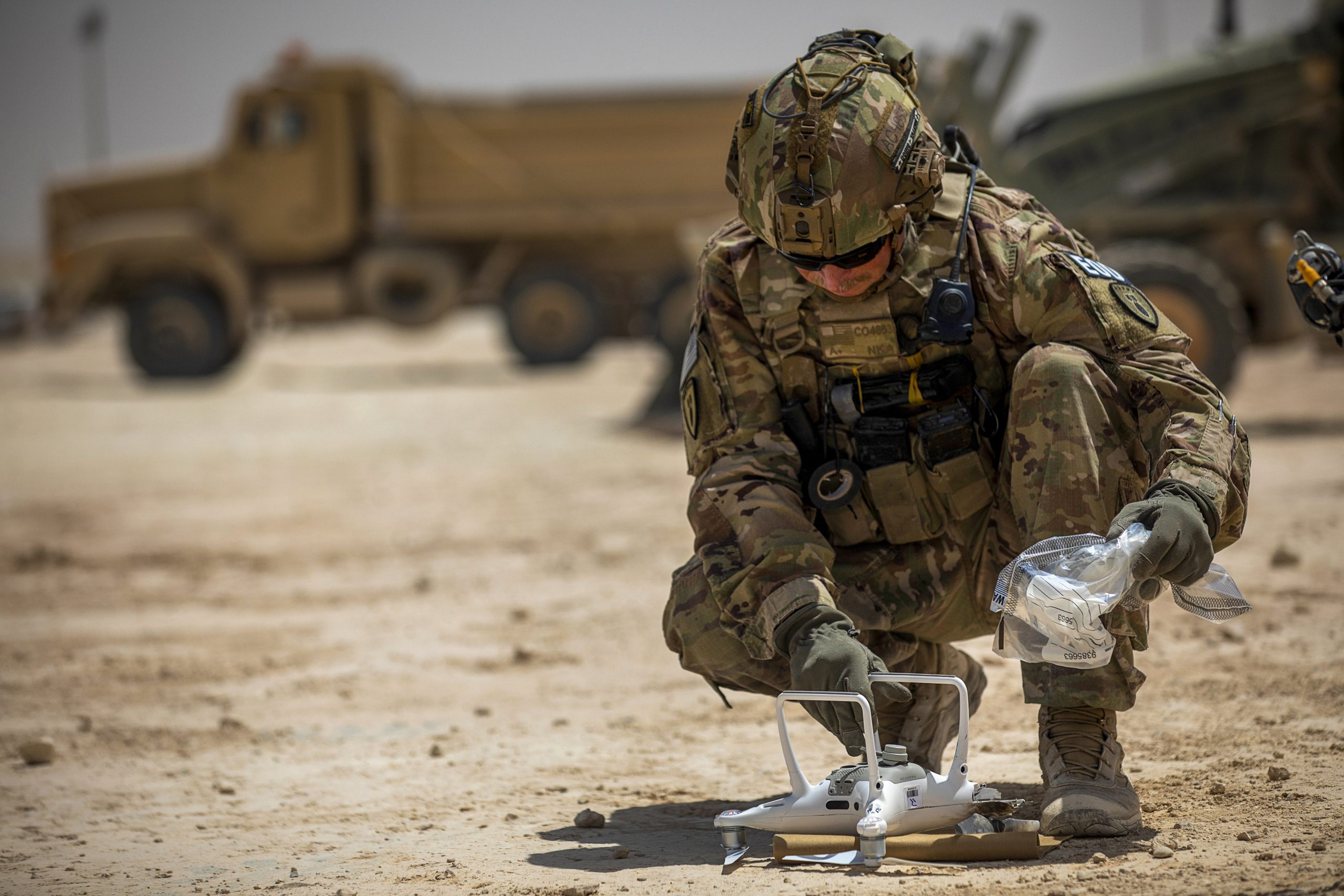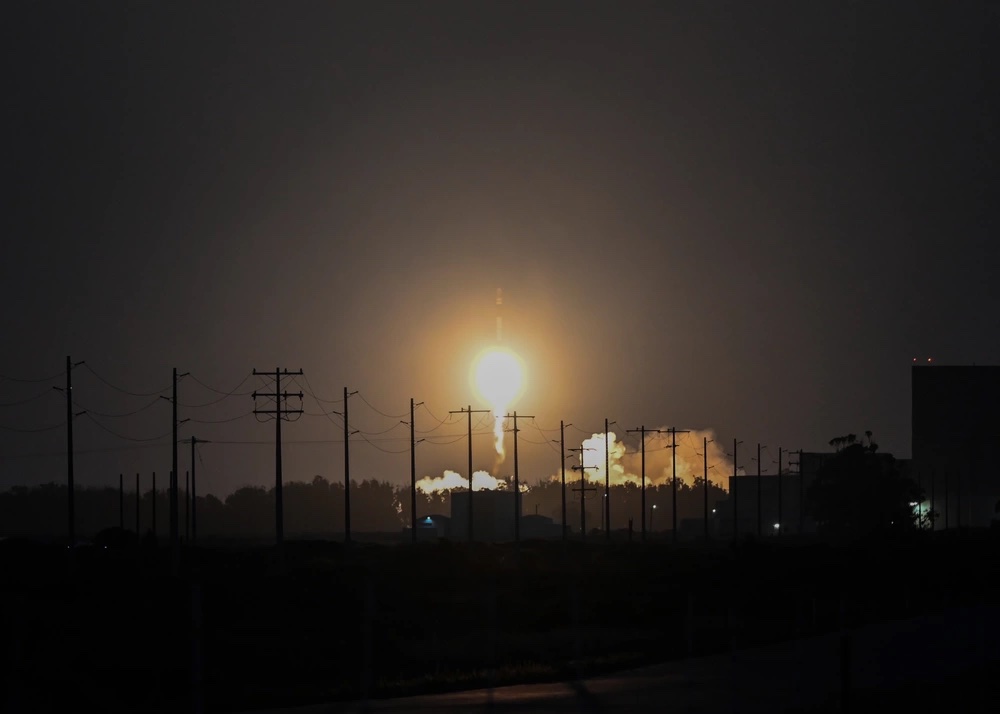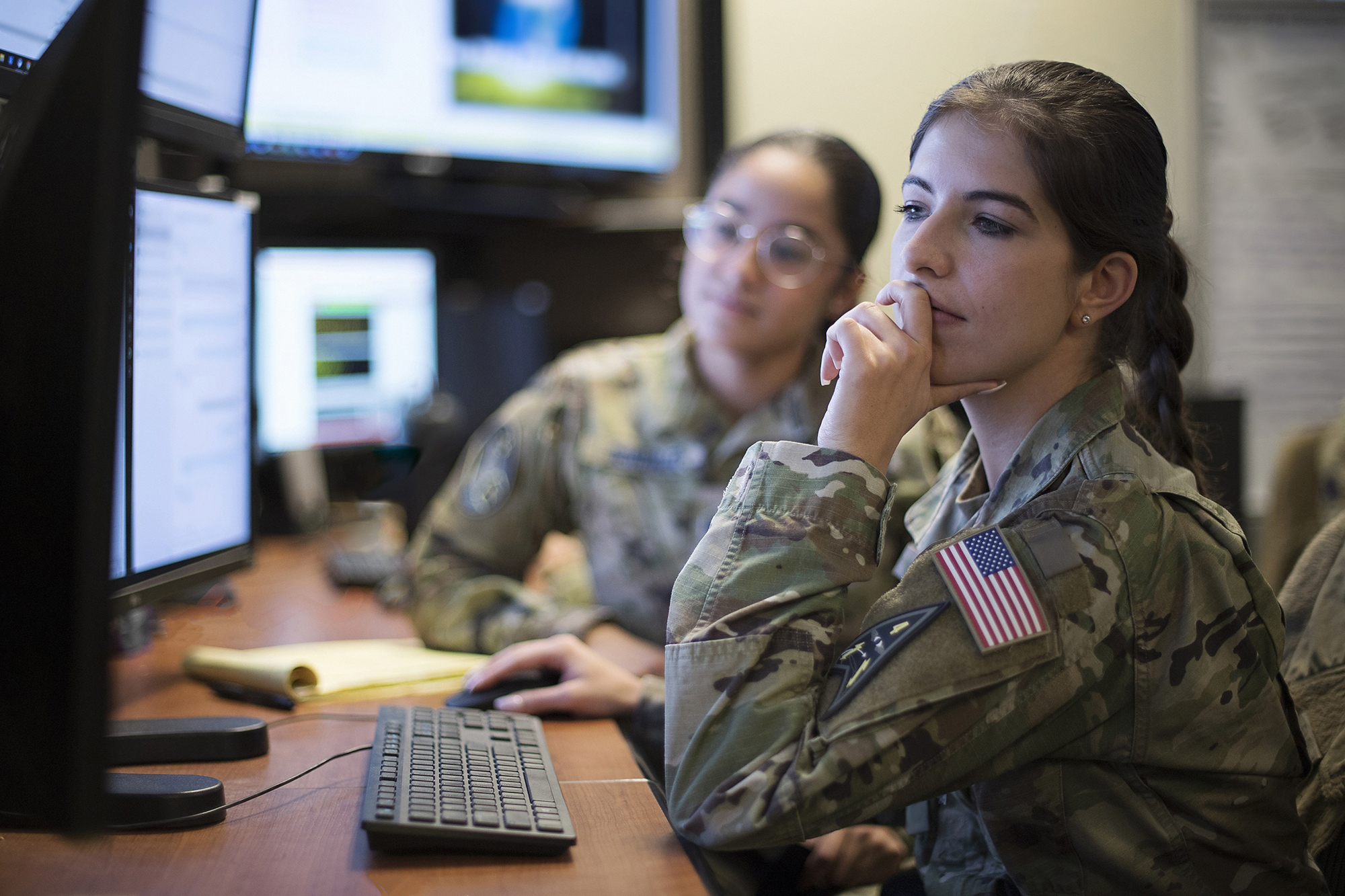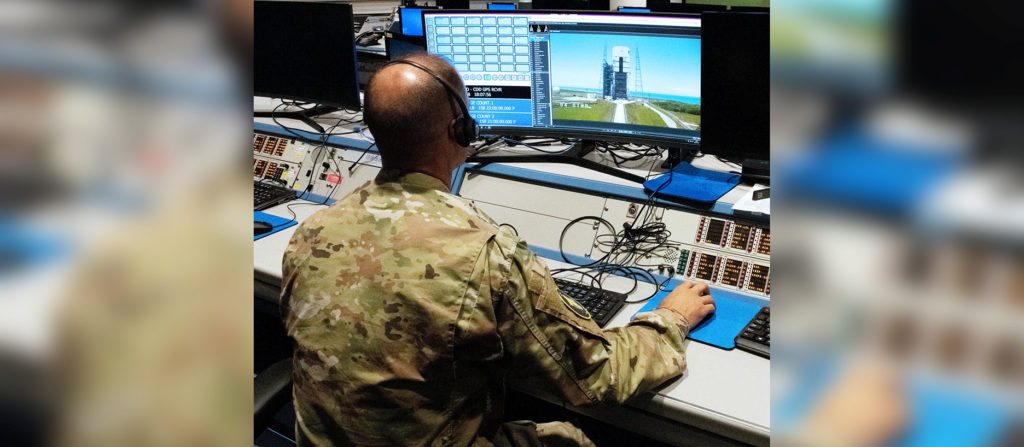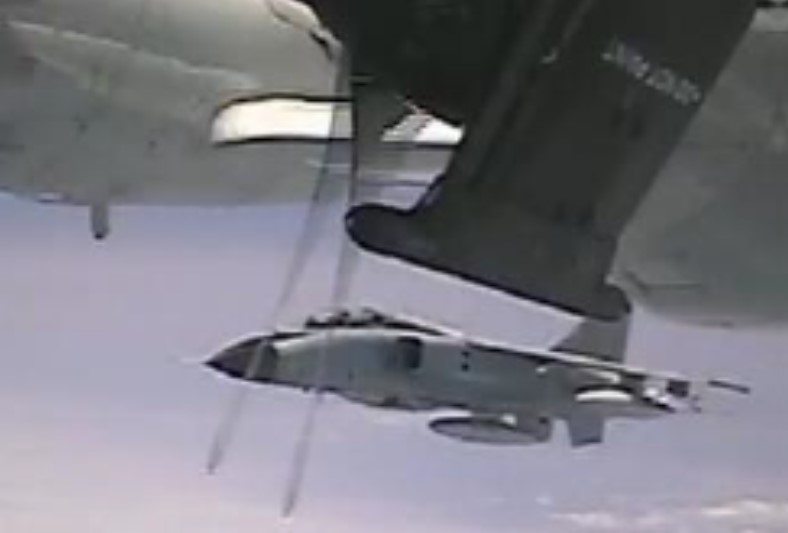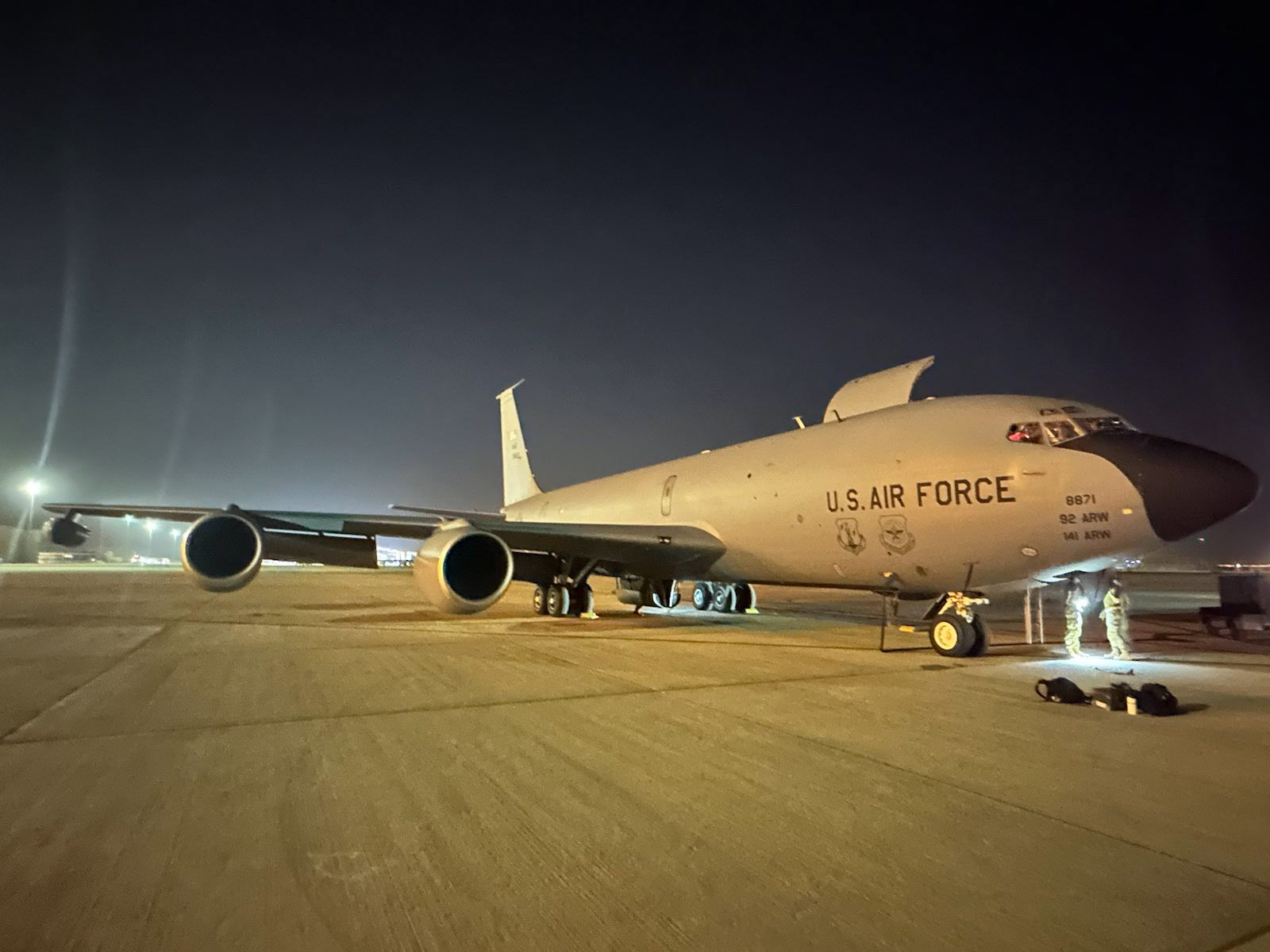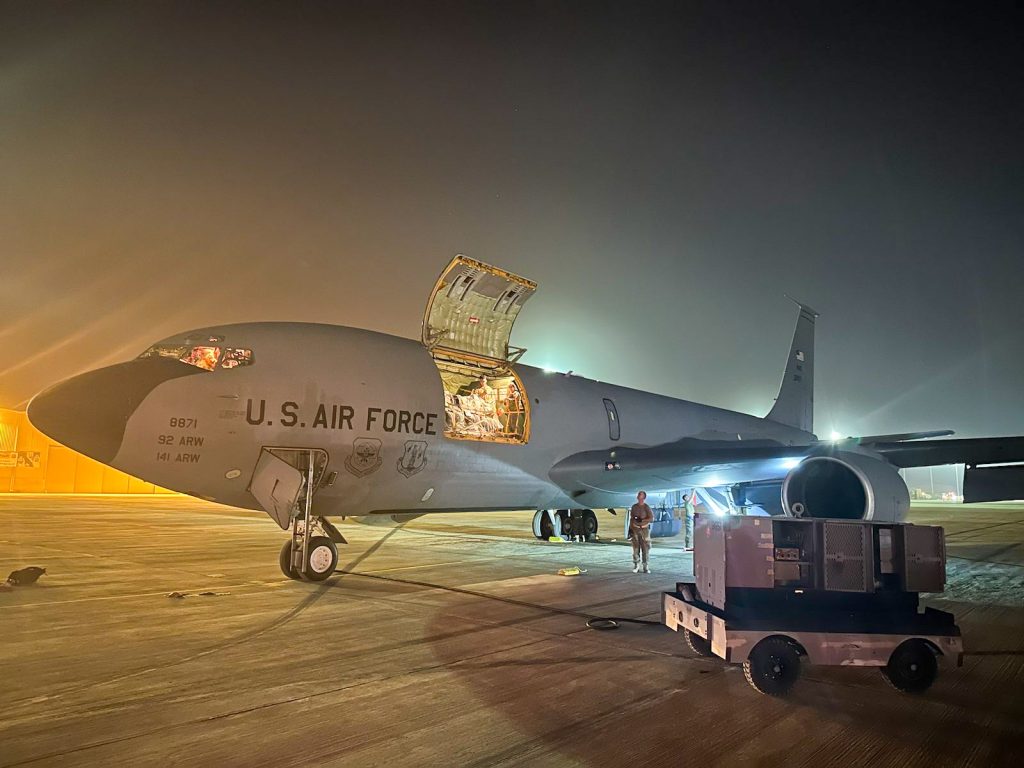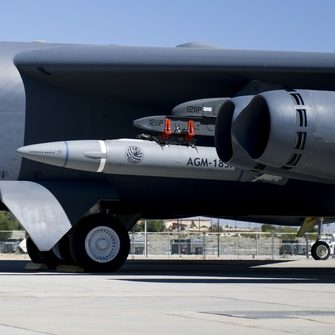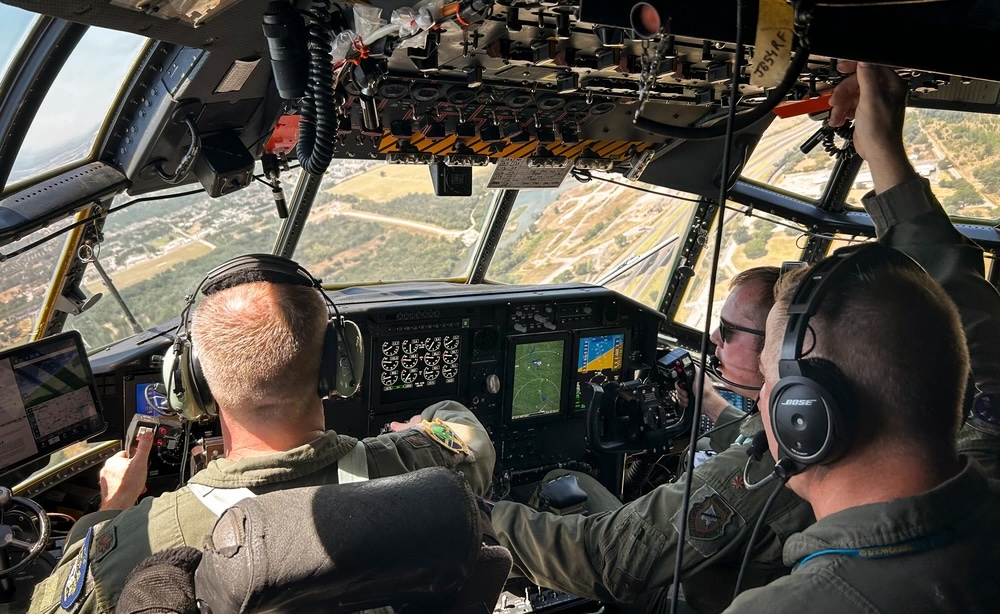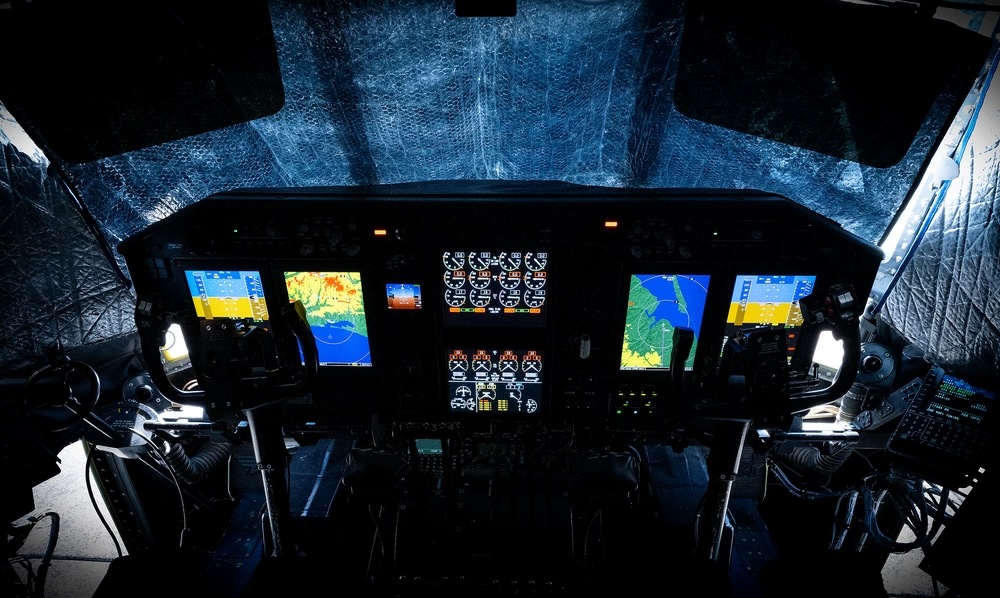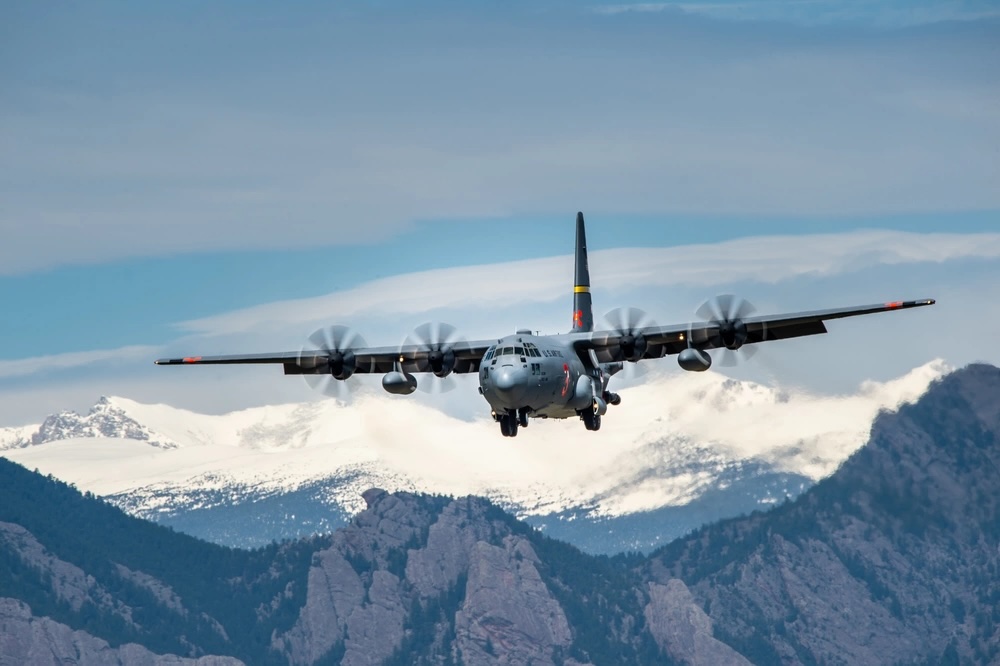China’s military continues to expand its reach around the globe, building up strategic and tactical capabilities, especially its missile programs, according to a Pentagon report released Oct. 19.
The updated annual China Military Power Report says the People’s Liberation Army is developing:
- Air-to-air missiles that can strike from beyond visual range
- Conventionally-armed intercontinental missile systems
- Increased numbers of nuclear warheads
While the 2021 edition of the China Military Power Report cited the PL-15 missile, a beyond-visual-range munition often compared to the U.S.’s AIM-120 AMRAAM, the update did not. In a press briefing, a senior defense official declined to discuss China’s long-range air-to-air missiles in any depth. However, unconfirmed reports indicate the Chinese are working on a more advanced long-range missile, sometimes called PL-XX or PL-21. The new DOD report seems to reference this development, noting noted that the People’s Republic of China is “exploring dual-mode guidance capabilities, which uses both active radar and infrared homing seekers that improve target-selection capabilities and make the missiles more resistant to countermeasures.”
In surface-to-surface weapons, the senior defense official said that if China does develop a conventionally-armed intercontinental missile, it would mark the end of a progression for the PLA Rocket Force, which has steadily developed short-, medium-, and long-range conventional ballistic missiles.
“It would give them a conventional capability to strike the U.S., for the first time for the PLA Rocket Force, and to threaten targets in the continental U.S. and Hawaii and Alaska,” the official noted. “And I think as we see them maybe exploring the development of those conventionally-armed ICBMs, it raises some questions about risks to strategic stability.”
Meanwhile, China continues to rapidly expand its nuclear forces, which U.S. officials have previously termed “breathtaking.” While last year’s report predicted the PLA may have “about 1,000” nuclear warheads by 2030, and 1,500 by 2035, this year’s report was less definitive; while still projecting “over 1,000” warheads by 2030, it does not offer a longer-term forecast.
More immediately, the report posits that China “probably completed the construction of its three new solid-propellant silo fields in 2022, … [with] at least 300 new ICBM silos, and has loaded at least some ICBMs into these silos.” In all, the report estimates Chine “possessed more than 500 operational nuclear warheads as of May 2023,” up from 400 a year ago.
While that growth is significant, China’s nuclear force is still small in comparison to the U.S. and Russia. Russia has nearly 5,900, according to the Federation of American Scientists, while he U.S. warhead inventory numbers more than 5,200.
“We see the PRC continuing to quite rapidly modernize and diversify and expand its nuclear forces,” the senior defense official said. “What they’re doing now, if you compare it to what they were doing about a decade ago, it really far exceeds that in terms of scale and complexity. They’re expanding and investing in their land-, sea-, and air-based nuclear delivery platforms, as well as the infrastructure that’s required to support this quite major expansion of their nuclear forces.”
While China’s nuclear capabilities grow, it is also updating its air fleet. The People’s Liberation Army Air Force”. The Pentagon report noted that “the PLAAF, “in particular, has received repeated calls from its leadership to become a truly ‘strategic’ air force, able to project power at long distances to advance and defend the PRC’s global interests.”
To do so, the report said, the PLAAF is investing in:
- Upgrades to its fifth-generation J-20 fighter
- Developing its H-20 bomber, projected to have both nuclear and conventional roles
- “New medium- and long-range stealth bombers to strike regional and global targets.”
On top of that, the report notes for the first time that China has fielded the new Y-20U tanker.
“These new air refuelable aircraft will significantly expand the PRC’s ability to conduct long-range offensive air operations,” the report states. “In addition to aerial refueling, it is expected that there will likely be further Y-20 variants, such as a possible [airborne early warning and control] variant.”
Taken together, all these developments mean the PLAAF “is rapidly catching up to western air forces,” the report concludes.
At the same time, the PLA’s aviation forces have become increasingly aggressive in confronting and harassing U.S. and allied aircraft in the region, a trend the Pentagon highlighted earlier this week by declassifying and releasing dozens of photos and videos of threatening and unsafe behavior from the past two years.
